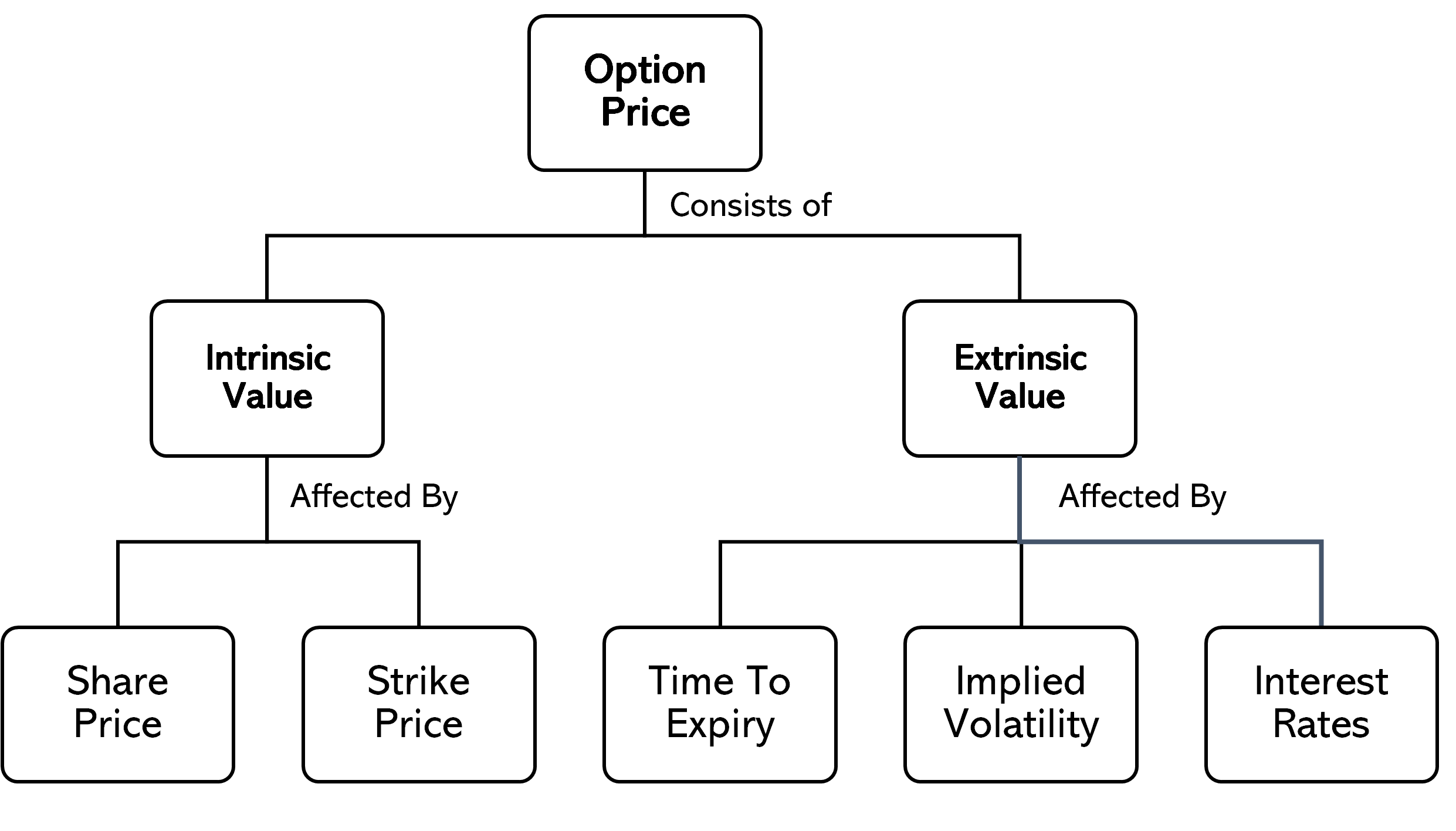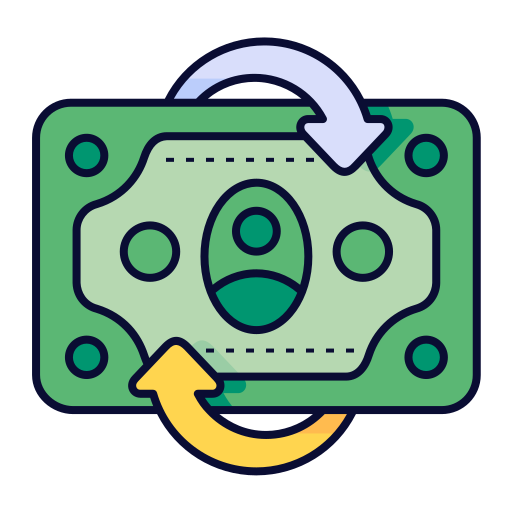What Determines Option Pricing
Options Investing Hub ⮞ Options Basics ⮞ What Determines Option Pricing
6 RESOURCES
⮞ Introduction To Options
⮞ The "Blackhole" Of Options Strategies
⮞ The 2 Core Option Strategies For Investors
⮞ Time Decay Of An Option
⮞ What Determines Option Pricing
⮞ Risk Profile Graph Of Option
What Determines Option Pricing

There are essentially five factors that affect the price of an option.
- Current Share Price
- Strike Price
- Interest Rates
- Day To Expiration
- Implied Volatility
Remember that I said that an option pricing consists of both intrinsic value and extrinsic value?
Here's the breakdown of a options pricing structure.

The Intrinsic Value
Let's start with intrinsic value - because it is much easier to understand.
The calculation of intrinsic value is as follows:
For Call Options: Current Share Price - Strike Price
For Put Options: Strike Price - Current Share Price
And the minimum intrinsic value is zero - this means there is no such thing as a negative intrinsic value.
Let's do a few examples.
Example 1: Intrinsic Value Of Call Option
I buy a call option with a strike price of $30 - and the current share price is $36.
This means that the intrinsic value of the call option contract is:
Ans: $36 - $30 = $6.
Let's do another example for put option.
Example 2: Intrinsic Value Of Put Option
I buy a put option with a strike price of $40 - and the current share price is $36.
This means that the intrinsic value of the put option contract is:
Ans: $40 - $36 = $4.
Let's do one more example.
Example 3: Intrinsic Value Of Call Option
I buy a call option with a strike price of $25 - and the current share price is $20.
This means that the intrinsic value of the put option contract is:
Ans: $20 - $25 = -$5
This is incorrect - remember that the intrinsic value cannot be negative.
Therefore, the intrinsic value of the option in this example is actually zero.
The Extrinsic Value
The extrinsic value is the tricky bit, and remember that it is affected by three factors:
- Time To Expiry
- Interest Rates
- Implied Volatility
The extrinsic value will increase with rising interest rates and increased volatility.
However, one thing is for sure - the extrinsic value will go to zero when the date to expiration reaches zero.
And how do we calculate extrinsic value?
Well, we use the following formula:
Current Option Premium - Intrinsic Value
Let's go through some examples to see if you understand.
Example 1: Extrinsic Value Of Call Option
I paid $7.20 in option premium for a call option. The strike price is $30 and the current share price is $36. This means the intrinsic value is $6. What is the extrinsic value of the option?
Ans: $7.20 - $6 = $1.20
Example 2: Extrinsic Value Of Option
The interest rate is 5%. The implied volatility of the stock is 42%. The option have 0 days to expiry.
What is the extrinsic value of the option?
Ans: $0
That's right - when an option has expired, the option has no extrinsic value left.
Example 3: Extrinsic Value Of Option
The implied volatility of the stock increased from 40% to 65%. Will the extrinsic value increase or decrease?
Ans: It will increase
That's right - when the implied volatility increases, the extrinsic value of the price increases due to the option greek, Vega.
Note: Option Greeks are slightly more advanced, which is not covered in this Option Investing Hub - however it should not affect you executing the option strategies covered later
What Really Matters
We have now covered the basics of options pricing.
And that's really all you need to know to get a good understanding of how options works. There are other topics such as Option Greeks but I have decided to exclude them because it should not affect you executing the two core option strategies discussed later.
The Long Call Strategy
So basically, for the long call strategy - we are betting on an increase in share price (i.e an increase in intrinsic value of an option)
Since we are effectively buying a call option - we want to buy low and sell high.
Remember that:
Option Price = Intrinsic Value + Extrinsic Value
So if the intrinsic value increases - the option price increases as well.
Also remember that the extrinsic value of the option decreases to zero at the time of expiry.
So we want the extrinsic value to decrease as slow as possible - by choosing a longer expiration date (covered in later sections).
The Sell Put Strategy
What about the sell put strategy?
Remember that when we are selling options - we want to sell high and buy low.
This also means that after selling the option, you want the option price to fall as quickly as possible, so that we can buy low.
This means that we want to select a shorter date of expiry - so that the extrinsic value of the option falls as fast as possible.
Quiz Time
Note: One of the biggest reasons why the options hub was built as there were too many people who get burnt because of the lack of knowledge of how options works and its risks involved. This resource hub aims to equip beginner investors with the knowledge of options and how they can manage their risks when investing with options.





